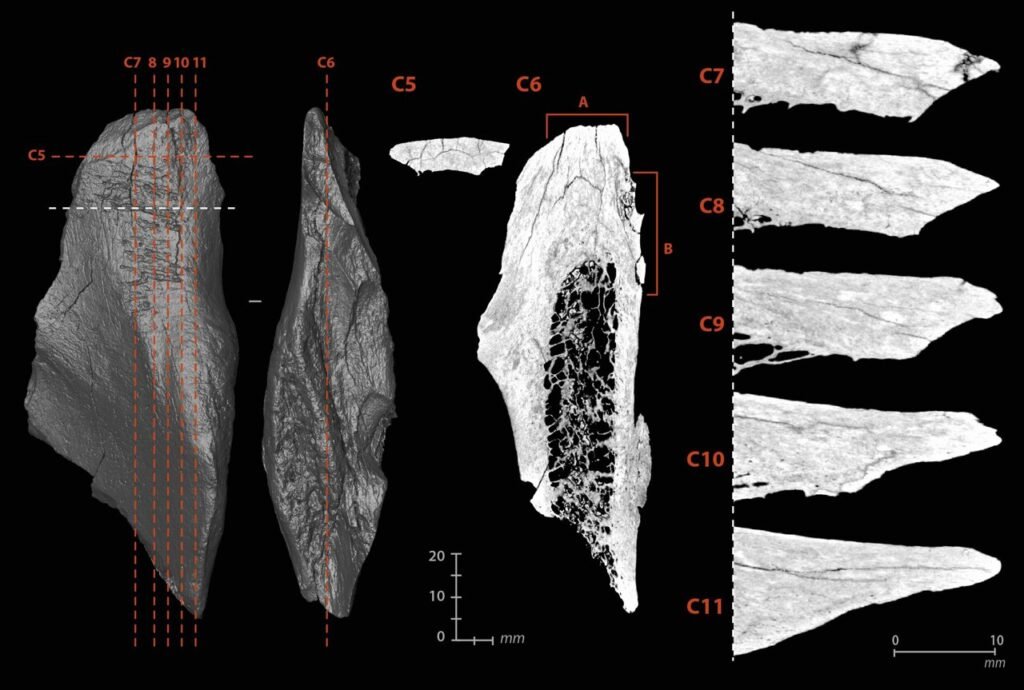An international team has made a groundbreaking discovery at the Chez-Pinaud-Jonzac Neanderthal site, shedding light on a lesser-known aspect of Neanderthal technology. The findings, published in PLOS ONE, have challenged the notion that anatomically modern humans were the sole users of bone tools.
Traditionally, it was believed that only anatomically modern humans possessed the knowledge and skill to transform bone into useful tools. This assumption was based on the absence of bone objects at Neanderthal sites, leading to the inference that Neanderthals lacked the ability to work with bone and therefore had a cognitive difference compared to modern humans. Neanderthals were thought to have relied solely on picking up bone fragments from butchered animal remains, using them primarily for retouching flint tools.
However, recent excavations conducted by an international team at the Chez-Pinaud-Jonzac site in Charente-Maritime since 2019 have challenged this assumption. The new findings have provided evidence that Neanderthals did, in fact, produce bone tools and implements. This discovery calls for a reassessment of the technological capabilities of Neanderthals and suggests a more sophisticated level of tool production than previously believed.
The archaeological findings at Chez-Pinaud-Jonzac demonstrate that from 45,000 years ago onwards, when anatomically modern humans coexisted with Neanderthals in Western Europe, there was a notable increase in the variety of bone objects. These included hunting weapons, ornaments, and even fully-shaped figurines, which were introduced by modern human groups.
By shedding light on this previously unknown aspect of Neanderthal technology, the research at Chez-Pinaud-Jonzac challenges the notion that bone tool production was exclusive to anatomically modern humans. It highlights the need to reevaluate our understanding of the cognitive abilities and material cultures of Neanderthals, suggesting that they possessed a level of skill and innovation in working with bone that was previously unrecognized.

Recent studies have revealed that bone tools were not only as common as flint tools but also exhibited a remarkable diversity. These findings provide compelling evidence of a bona fide bone tool industry among Neanderthals, encompassing various tool types such as cutting tools, scrapers, chisels, and smoothers. These tools were employed for a wide range of activities and used on different materials. Identification of these bone tools is facilitated by analyzing surface traces of manufacture and use, as well as utilizing X-ray microtomography to examine their internal structure. Unlike the bone tools produced by modern humans, which typically exhibit shaping through scraping and abrasion, Neanderthal bone tools were primarily fashioned through percussion.
The existence of a bone industry at the Chez-Pinaud-Jonzac site aligns with previous discoveries made by the same research team at the Neanderthal site of Chagyrskaya in the Siberian Altai region. These two sites, located on opposite sides of the Neanderthal distribution range, provide compelling evidence that Neanderthals, akin to their modern human counterparts, skillfully created and utilized bone tools for their daily needs. Neanderthals possessed the knowledge and techniques to process bone using their own methods and for their own specific purposes. The recognition of bone tools as integral components of Neanderthal technology opens up new avenues for exploring and comprehending their technological capabilities.
Source: University de Liege
